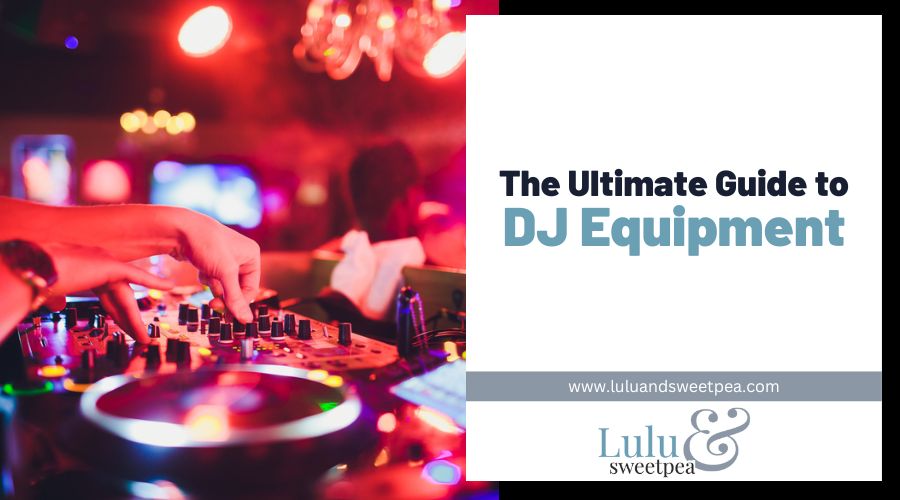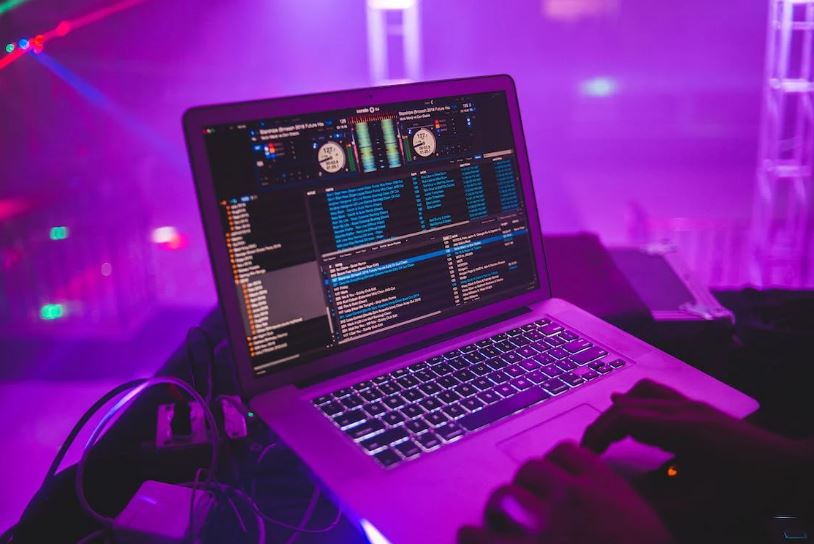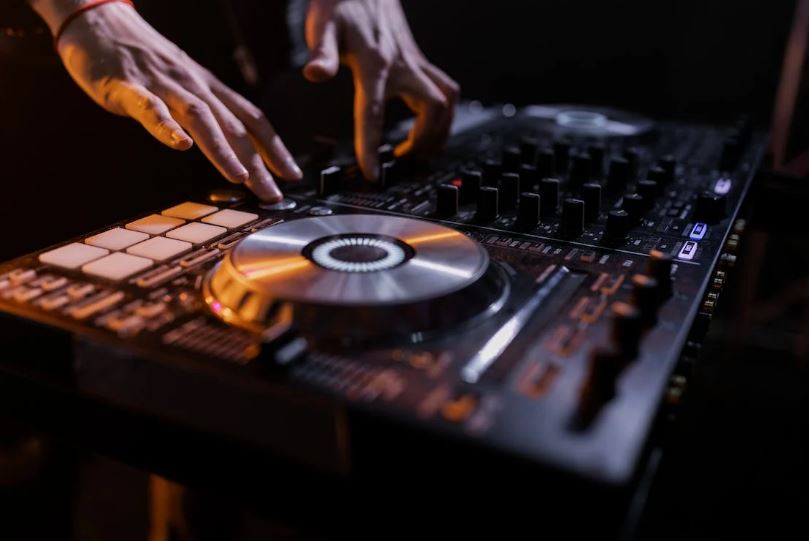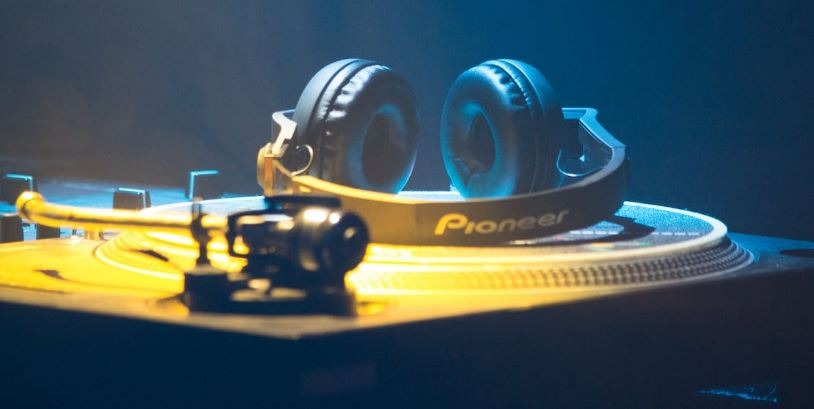If you want to learn more about DJ Equipment but don’t know where to begin, you’re in the perfect place.
Because the required DJ equipment will be outlined in this comprehensive guide, you will be able to begin your adventure with a simple yet effective setup.
1. The Computer
It is difficult to discover any part of music that has not transitioned into the digital sphere in the present day. Obviously, the electronic DJ music that you undoubtedly aspire to compose is in the lead here.
The laptop has consequently become the focal point of practically all current DJ setups. And it’s the first component you’ll need when building your own.
Fortunately, since even the most basic laptops of the past several years have developed at an incredible rate, this is not a piece of equipment that you will likely need to purchase.
As your current one will almost definitely suffice for all but the most intricate effect stacking.
However, if you’re planning for the long term, you should still purchase the most powerful laptop you can afford, as the power requirements of software and effects increase with every new version.
2. The Software
If item 1 were a computer, it is not surprising that item 2 would be software. Simply said, DJ software was first a digital depiction of the analog DJ tools that came before it.
New technology has enabled DJ software to expand into much more than it was in the past. With many of its current characteristics enabling possibilities unimaginable in an analog-only environment.
While hardware-only setups still exist, they are primarily utilized by seasoned DJs who have been performing for decades and have already established their preferred method of operation.
Software is unquestionably the way to go for someone just starting off.
3. The DJ Mixers
DJ mixers are used to move between tracks on turntables. As a result of their numerous channels and functionalities, numerous DJ mixers might be intimidating to novices. Extra channels and extra capabilities are excellent to have as you gain experience, but fundamental functions are all you need to create a fantastic mix.
The basic mixer that includes everything necessary to get started will include the following components.
Crossfader
This fader, also known as the xfader, moves left or right to transition between the two turntables (channels). The crossfader will always be positioned in the center of the mixer, nearest the DJ. Crossfaders can eventually wear out; however decent mixers will have a crossfader that is changeable.
Channel Faders
Up faders are also known as channel faders, line faders, and channel sliders. These faders control the volume of each channel and can be used to cut the volume quickly. They can also be used to fade tracks in/out while keeping the crossfader in the center. Turntablists utilize the channel faders for chopping and scratching as well.
Three Band Equalization
The EQ functions are used to manipulate specific musical frequencies. Some mixers have a 2-band EQ, whereas others have a 4-band EQ. However, the 3-band EQ is the most popular and sufficient option. The EQ panels are often arranged in a row above the channel faders and labeled low, mid, and high.
EQs will be utilized during the transition between two tracks to match the frequencies and prevent particular sounds from clashing. This is referred to as mixing.
Gains
Sometimes, the gains are also labeled as trim or input. These are essentially volume knobs, and they will be used to set the correct volume levels for each track in the mix. They will be used in conjunction with the equalizer to maintain proper levels and prevent clipping. Typically, the gains will be located just above the EQ panel in the same row as the channel they govern.
VU Meters
The VU meters are the lights that flash in time with the rhythm of your song. They are utilized for regulating volume levels and preventing audio clipping. Audio clipping is explained in detail in the EQ article cited above. However, audio clipping is undesirable and can cause equipment and speaker damage.
These are the most important characteristics to consider when purchasing a DJ mixer. Mixers will always offer additional functions that are standard regardless of brand. This often contains a master gain for adjusting the primary volume output. A headphone panel including a headphone volume and, in certain cases, a cue mix. The cue mix is comparable to a miniature headphone crossfader that will only fade between songs in headphones and not the main volume.
In addition to numerous input/output terminals on the rear of the mixer, there are also numerous input/output terminals on the rear of the mixer. You will need phono inputs for turntables and line inputs for CDJs and multi-players (we’ll discuss them momentarily). The master outputs are directly connected to your amplifier or active speakers. Some of you may additionally require a microphone input, which is typically located on the back or front of the device.
Some DJs may desire more capabilities or the ability to play audio from several sources. In the following section of this introduction to DJ equipment, we will examine multi players, CDJs, and something called a DVS.
4. The Audio System
No guide on DJ equipment for beginners would be complete without a discussion of the sound system. The master output connections on the rear of your mixer are where your speakers or amplifier will connect. The master output volume knob controls the overall room volume. Some mixers include a booth output, which mobile and club DJs will require. This will contain a separate volume knob on the mixer, allowing the booth volume to be regulated independently from the volume of the main room.
Mobile/club DJs will use the booth output to regulate the level of monitors, which are independent speakers in the DJ booth. Because speakers may be a considerable distance from the DJ or facing away from the booth, these are utilized. The sound reaches the DJ a fraction of a second after it leaves the mixer, despite the fact that the speakers may still seem close and loud. However, the music you are hearing through your headphones is instantly reaching your ears. This can wreak havoc on the mixing process.
Therefore, monitors are always recommended while using long speaker cords. Alternatively, where the speakers are directed away from the DJ booth. If you believe you will require a booth output, remember that not all mixers include one.
Active Speakers
Active speakers are speakers with an internal amplifier; they will connect straight to your mixer. They are ideal for home and mobile DJ use and represent the finest value.
You need only cables with plugs that correspond to the terminals on your mixer in order to plug and play. I always recommend active speakers to DJs due to their affordability and ease of usage. In addition, there is less cable clutter to create a tripping danger at home or on stage.
Passive Speakers
Passive Speakers are distinct from active speakers since their power source is an external amplifier. Passive speakers are typically lighter and less expensive than powered speakers, but you will need to purchase an amplifier if you employ them in your setup. This arrangement is suitable for mobile DJs with large sound systems and venues, but not so much for DJs that perform in their bedrooms.
Amplifiers
If you require additional power for huge sound systems or a bigger number of speakers, amplifiers are an excellent choice. The cooling fan can make them a noisy addition to residential settings, considerably louder than a PC fan! And they are not required unless you have an enormous sound system.
5. The DJ Headphones
DJ headphones are necessary for a multitude of reasons, despite the fact that they may initially appear trivial.
They enable you to hear both decks independently, allowing for easy mixing and transitioning.
A good pair of headphones enables you to practice at home and make judgments prior to performing live, generate music without disturbing others, and even mix on a train, in a hotel room, or in the restroom in peace!
You’ve probably seen a photograph of DJs wearing a single headphone. The reason for this is that they are cueing up the next track.
Using the slider on the mixer, you may determine which side of the sound source is being played to the audience; often, DJs are listening to the source that you CANNOT hear on their headphones.
This indicates that a new track or sound is about to be added to what you’re hearing. Without headphones, it is virtually impossible to DJ effectively!
You may also read our Guide to Choosing Headphones for more tips and recommendations.
6. The DJ Turntables
Whether you’re using vinyl or CDs (MP3 users are covered in the Controllers section), you’ll need turntables to play your tracks.
This makes it arguably the most important piece of DJ equipment, and any DJ worth their salt should have at least one in their arsenal; are you even a DJ without one?
If you wish to scratch or physically cue albums, LPs, or single songs, it is a vital piece of DJ equipment, thus you should consider purchasing one.
If you’re using separate turntables, you’ll also need the mixer, an essential DJ component.
In Conclusion
The DJ world is rife with instruments, digital software, and equipment for creating and altering music. To create high-quality music, you should not, however, sacrifice instrument quality.



